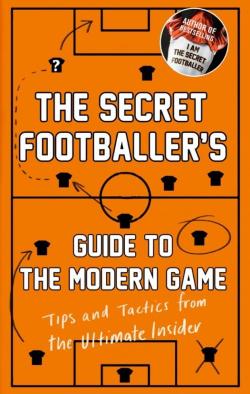 Football Against the Enemy, Simon Kuper (1994)
Football Against the Enemy, Simon Kuper (1994)
Despite everything, football – in the true sense of the word – is still the best and most beautiful sport on earth. Disliking it because of some of the people who take part in, run it or support it would be like disliking the English language because Tony Blair speaks it or Will Self writes in it. English is bigger than them and football is bigger than sets of Red Devil golf-clubs. Football even has good books written about it. This, unlike Nick Hornby’s far better-known Fever Pitch, is one of those good books. Hornby reminds me of a nose-picker. Yes, he may have devoted a great deal of time to his hobby and derived a great deal of pleasure from it, but why tell the world?
You don’t need to ask that question about this book, because football is the world’s most popular sport and this book is an exploration of how it influences the world’s culture and politics in all manner of strange and unexpected ways. Sometimes disturbing ways too. Or amusing ones. Or both:
The general director agreed to an interview (for free) and the next day I found him in his office. It is basic and battered and located in the basement of the Omnisports Stadium, just a few doors down from the room where he kept 120 pygmies from the Cameroonian rainforests locked up last summer. Milla [a Cameroonian star at the 1990 World Cup] had invited the pygmies to play a few games at the Omnisports, to raise money for their health and education, but he imprisoned them there, issued them with guards (one of whom wore a Saddam Hussein T-shirt) and seldom fed them. A tournament spokesman explained to Reuters: “They play better if they don’t eat too much”. As for the imprisonment: “You don’t know the pygmies. They are extremely difficult to keep in control.” The Omnisports cook concurred: “These pygmies can eat at any time of the day and night and never have enough”. The little hunters themselves were too frightened to comment.
Their tournament was a disaster. Team names included Bee-sting of Lomie and the aptly named Ants of Salapoumbe, but only 50 fans bought tickets, and most of these came strictly to shout abuse at the pygmies.
Absurdity, as the Theatre of the Absurd taught us, can be cruel as well as funny, and Africa can be an absurd place, to the fullest extent of both senses. Football, there as elsewhere, reflects regional character:
Recently, three contracts have appeared for the sale of one player from Torpedo Moscow to Olympiakos Piraeus. One contract is for the Greek tax inspectors, one they show to the player, and the third is the real contract, but no-one knows which is which. (ch. 5, “The Secret Police Chief at Left-Half”)
The former Soviet Union is riddled with corruption, and so is its football. You’ll also learn in this chapter that clubs from Eastern Europe with “Dynamo” in their names were usually set up and run by the Secret Police. That is why they were so unpopular, unless they managed to associate themselves with nationalist aspirations, as Dynamo Kiev did. Kuper devotes a chapter to the club, with fascinating details of the “science of football” developed there that allowed Kiev to dominate European football during the mid-’80s with a team of super-fast, super-fit “robots”.
But I wonder whether pharmacology played its part in their success, as it may have done during the 1982 World Cup, hosted and won by Argentina. Two Argentine forwards, Kuper writes, carried on running for an hour or two after one game, in order to work off drugs they had been injected with on the orders of Argentina’s military dictators. Winning the World Cup was important for public morale, and the generals were prepared to go to any lengths to help the team win it.
Few other sports can affect the mood of an entire nation for better or worse like that, and none can do it as powerfully as football. That makes football uniquely susceptible to corruption, and uniquely placed to reflect national character. Football isn’t the world, but you can find much of what’s important in the world and its people there. If you find yourself wondering how, let Kuper show you, all from the rivalry between Holland and Germany to the Pope’s season ticket at Barcelona by way of an American journalist who holds 0•3% of the shares in Charlton Athletic.
The only complaint I have about the book is the prose, which betrayed occasional tendencies towards one of my pet hates: what Fowler’s Modern English Usage describes as “elegant variation”: that is, referring to a “spade” as a “spade” once, then as a “pedally operated earth-moving implement” before you refer to it as a “spade” again. It’s an aesthetic flaw and that’s a shame in a book about the world’s most aesthetically pleasing sport.

